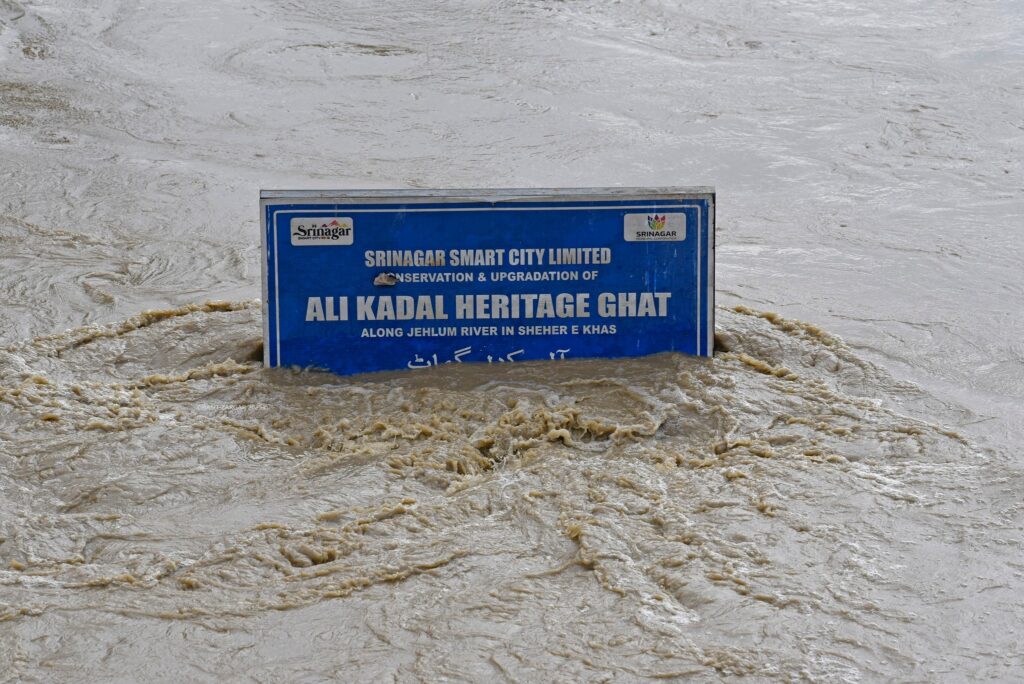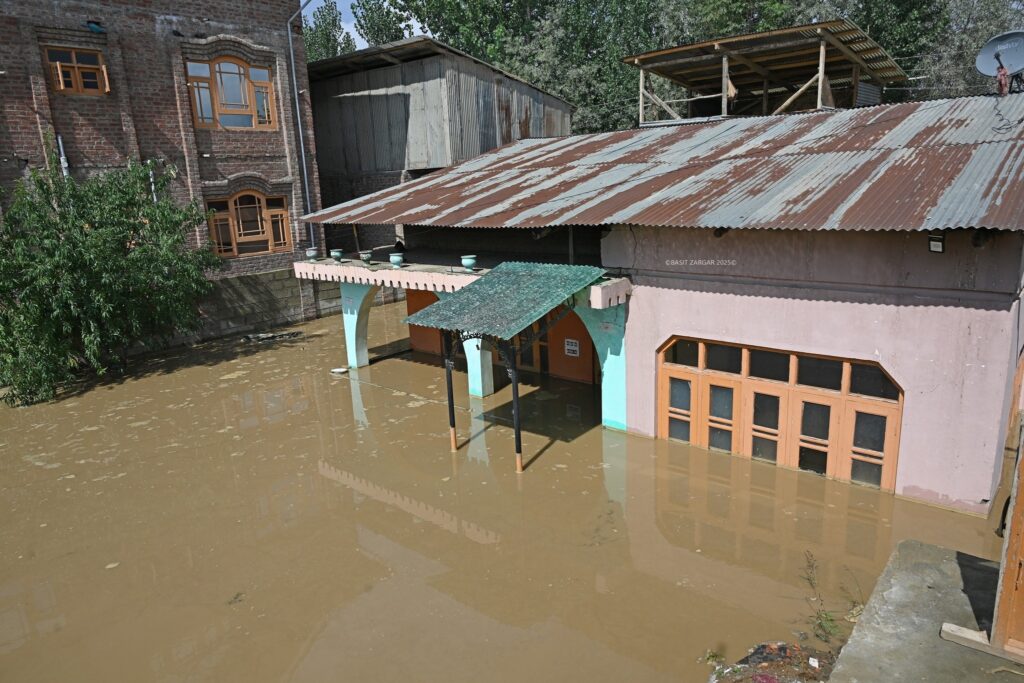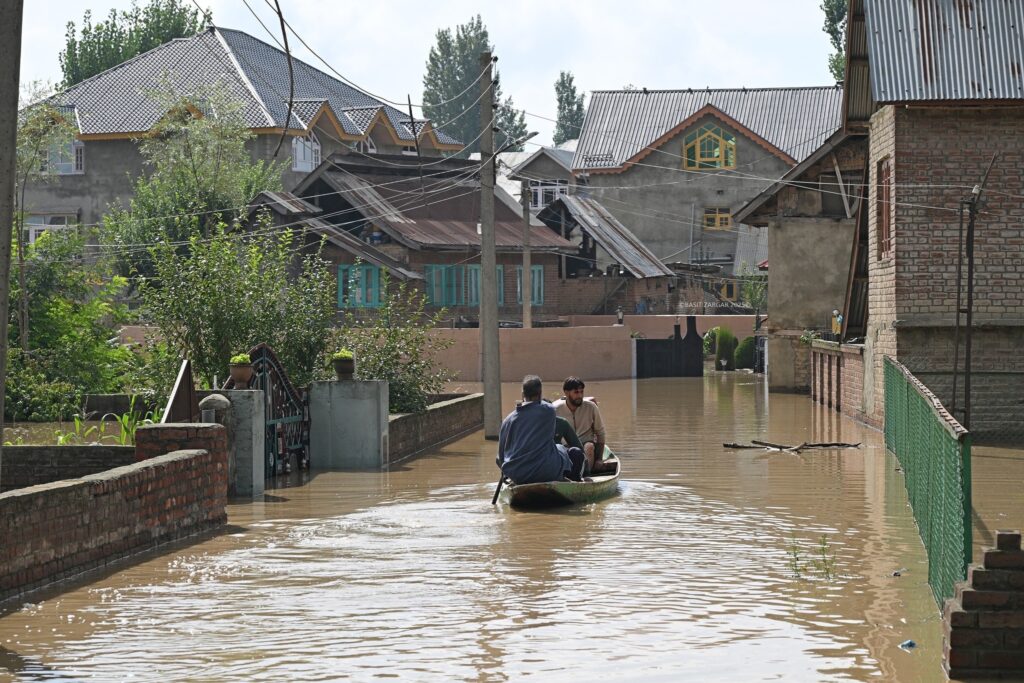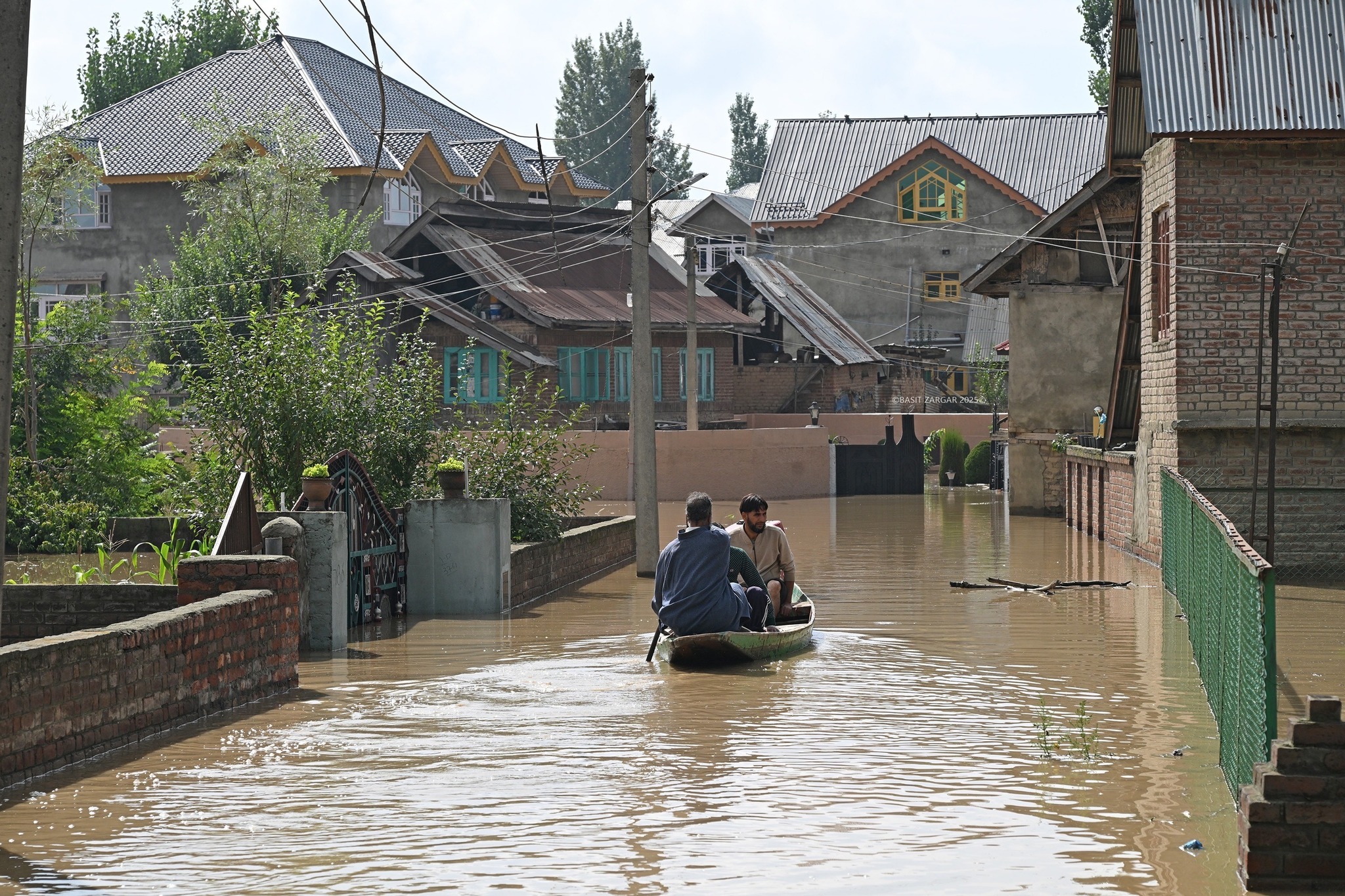By Ajaz Rashid
The recent floods in Jammu and Kashmir have written a new chapter of devastation in the region’s long battle with the monsoon, inflicting loss, sorrow, and profound questions about preparedness in a changing climate. The deluges—fed by relentless rain, bursting rivers, and sudden cloudbursts—have left communities battered, rescues ongoing, and survivors clinging to memories of homes and hopes swept away.
Torrential Rains and Instant Catastrophe
It began as the kind of relentless monsoon night every Kashmiri dreads. Rain hammered the hills and valleys for days, culminating in August with record rainfall—Jammu received 380 millimeters in one harrowing 24-hour period, surpassing a record that stood since 1988. The earth could not soak up the downpour; rivers rose angrily in their banks, and warnings gave way to panic as torrents surged through villages and towns.
On August 14, disaster struck with particular fury in Chositi, a remote village on the Machail Mata Yatra pilgrimage route in Kishtwar district. A cloudburst triggered flash floods that buried homes and swept away a community kitchen filled with hundreds of pilgrims. By the end of the day, dozens were dead, hundreds injured, and at least 200 missing—a tragedy compounded by the difficult terrain and the isolation of survivors from timely rescue.

Rivers in Revolt
The Jhelum, the Tawi, and their tributaries became both destroyer and divider. Jammu watched helplessly as a key bridge over the Tawi—an artery linking neighborhoods and economic lifelines—crumbled beneath the onslaught, with police barely managing to redirect traffic before disaster. In the valley, the feared moment came as the Jhelum crossed danger marks in Anantnag, Kulgam, Pulwama, and parts of Srinagar, breaching embankments and forcing evacuation of over 9,000 people in Budgam alone.
As floodwaters receded from some areas, fresh rains threatened to return the nightmare. Wular Lake, swollen from runoff, hovered just beneath alert levels, its rising surface a barometer of continued peril for North Kashmir.
Lives Lost, Lives Upended
Death has come stealthily in the waters—at least 40 lives lost in Jammu from floods and landslides, dozens in the pilgrimage tragedy, and a mounting count as recovery gives way to grim discoveries. Survivors recount split-second escapes, like Mohan Das who continues searching for five missing friends, last seen in the chaos at Chositi.
Entire families have been displaced, their homes reduced to mud and debris. In rural districts, stunned villagers sift through wreckage for salvageable memories, as relief camps strain to provide shelter, food, and solace. In Punjab and other neighboring states, parallel stories of inundation, farm ruin, and displacement echo the misery upstream.
Rescue and Relief
Indian authorities responded with one of the largest flood rescue operations in recent years. The Indian Air Force deployed Mi-17 and Chinook helicopters, extracting more than 215 people in dangerous sorties over Dera Baba Nanak, Pathankot, and Akhnoor. Army and Border Security Force teams, many themselves stranded, joined National Disaster Response Force squads in round-the-clock operations, delivering over 7,000 kilograms of relief materials and airlifting stranded villagers and pilgrims to safety.
Beyond the headlines, there are quiet heroes: teachers in flood-isolated schools evacuating students, farmers ferrying neighbors across waterlogged fields, and local volunteers organizing community kitchens as government aid filters through traffic-choked, debris-strewn highways.

Questions Left in the Wake
As floodwaters recede and the region takes stock, Kashmiris and observers are left with difficult questions. Did lessons from the catastrophic floods of 2014 translate into adequate preparedness? Many blame unplanned urban sprawl, unchecked deforestation in the catchment areas, and insufficient maintenance of river embankments for magnifying the effects of natural deluge.
Climate change, scientists warn, is a multiplying force. Warmer air holds more moisture, fueling heavier—and increasingly unpredictable—monsoon surges. As Kashmir and the Himalayas warm faster than the global average, cloudbursts and flash floods may become a new norm, not an aberration.
Human Stories
For survivors, the ordeal does not end with the retreating water. Mohan Das and thousands like him dig through mud, haunted by the absence of loved ones and the uncertain future ahead. Farmers like Surinder Singh, whose land in Punjab has lain submerged for weeks, must reckon with lost crops, mounting debt, and children relocated far from school and home. In relief camps, old men stare in silence at photographs of vanished homes, while children invent games amid uncertainty, clinging to routines disrupted by forces beyond comprehension.

Hope in Solidarity
Despite tragedy, glimpses of hope emerge in the solidarity of neighbors and strangers, in the tireless rescue workers, and in the determination of a people long accustomed to struggle. Government pledges—compensation, rehabilitation, and sustainable planning—face the ultimate test of implementation, while Kashmiris look warily to the skies, evaluating each cloud for menace or mercy.
A Region at a Crossroads
The 2025 floods in Jammu and Kashmir are both a calamity and a crossroads. As the region digs out, it must confront not just the immediate physical losses, but the deeper challenge of adaptation—rethinking urban planning, disaster preparedness, and climate resilience—for a time when the rains will surely return, and the rivers may again rise.
For now, the memories of August’s waters—rushing, overwhelming, and all-consuming—remain etched across the land, demanding remembrance, reform, and, above all, resilient hope.
